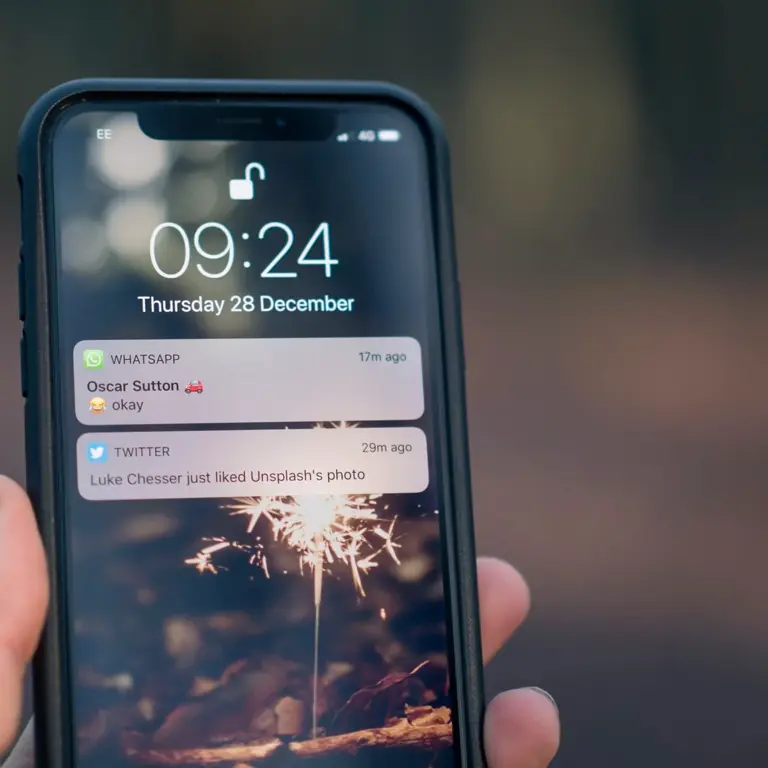




Push notifications – they’re a great way to grab your user’s attention quickly and an essential part of the mobile app experience. But they can also be a challenge. You need to use them effectively, or you risk potentially losing your audience.
Anyone with a smartphone (that’s 80% of all internet users) is more than well-versed in receiving and consuming these little snippets of content known as push notifications every day. The mobile browsing market has been growing at a steady pace over the past decade. 72% of all minutes online are spent on mobile browsing and over a quarter of us interact with our phones more than any other object. Push notifications also extend beyond mobile, to web push notifications on laptop and desktop computers. So, cracking the code on push notifications is critical for your digital marketing.
Push notifications can also be intrusive or annoying. It’s happened to us all – there you are minding your own business when suddenly you get distracted by a notification flashing in your face to remind you that you haven’t logged your calorie count today. You had pizza for lunch. You don’t need that kind of negativity in your life. In fact, 60% of app users turn push notifications off straight away, and 71% of all app uninstalls are triggered by a push notification.
The good thing about push notifications is they remind your users that your app is installed. The bad thing about push notifications is they remind your users that your app is installed.
Get that touchpoint wrong, and you’ve lost that user, perhaps for life.
But don’t let the stats put you off – push notifications can be great if they’re relevant and engaging. Companies like Netflix, Spotify, and Facebook are great examples of using personalised notifications and providing significant, valuable information to their users.
Push notifications aren't the issue, it’s the way they are being used by marketers.

Where are your users predominantly based? You should focus on the relevant time zones and when they're the most engaged. We'd suggest mornings between 7am-10am or evenings between 6pm-10pm. Avoid sending notifications any later than this unless it's absolutely urgent – there’s no point notifying a sleeping user.
Push notifications should be user-focused. Random content sent out to everyone and anyone won't work. It needs to be relevant, helpful, and interesting. Remember - these are people you're targeting, not robots!
Surprisingly, personalisation is sometimes forgotten about by marketers when it comes to push notifications. The best push notifications are those tailored to the user. Personalisation = better engagement.
Push notifications targeted to specific personalised segments have a 50% higher click-through rate than push notifications sent without the use of segmentation. CleverTap stats show basic personalisation can improve open rates by 9%.
The MemConnect platform’s push notification engine allows you to send highly-targeted notifications based on the information you have about your user, e.g. their interests, app usage, and behaviour.
Adding rich media like images, short videos, or icons to a push notification will make it stand out and can be really powerful in terms of storytelling. It's critical that you get your message across in those few characters.
Use a maximum of 10 words per notification – short but sweet. Make it snappy, but easy to understand.
A friendly voice goes a long way. Keep your notifications conversational and playful. You don't want to come across as spammy, which can often be the case. Find that fine line between getting an important message across while remaining personable. Using emojis can be great for engagement, and can increase reaction rates by 20%.
Examples:

Try to send no more than 2 notifications a day. The number of notifications really depends on any updates your business might have, and the quality of the content you’re driving users to.
Instead of being overly keen with notifications, thus making people more likely to switch off, focus on delivering value and building a long-term brand reputation.
According to Accengage, only 43% of iOS users choose to opt in to push notifications. You need to show the value of your app via your push notifications so your users' don't switch them off. Ask for opt-in permissions at the right time (not immediately after download), give them the chance to play around with the app, and use a 'soft' ask approach.
The only way to really find out how your users best interact with push notifications is through trial and error.
With MemConnect’s analytics toolkit, you can review data on how your notifications are performing. Not everyone responds the same way, so collect as much data as you can in order to be more in-tune with your users’ needs.
Push notifications are a great way of re-engaging users outside of your app if you follow best practices.
If you'd like more information or you are interested in an app for your business, please don't hesitate to reach out or email us at [email protected]
Editor's Note: This article was originally published in 2019 and has been updated for accuracy and comprehensiveness.
